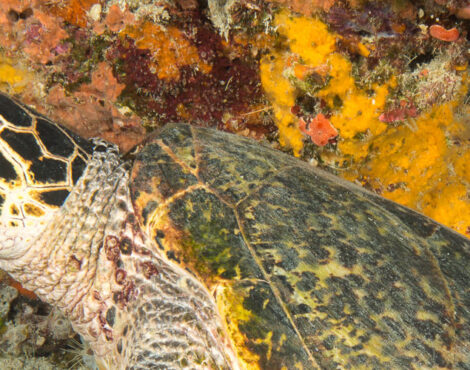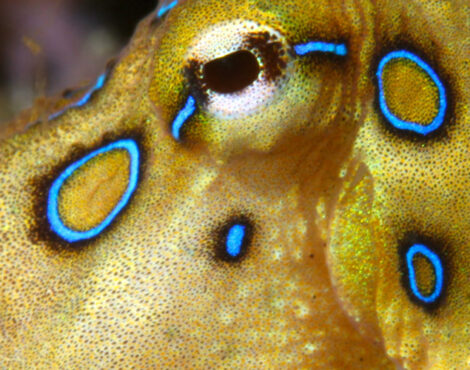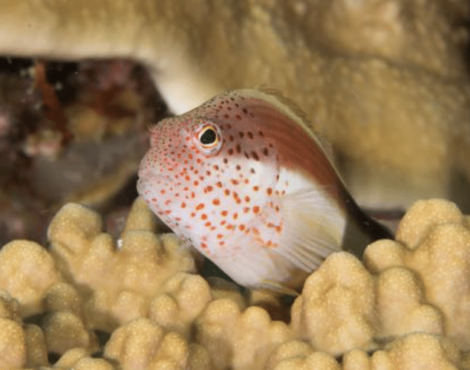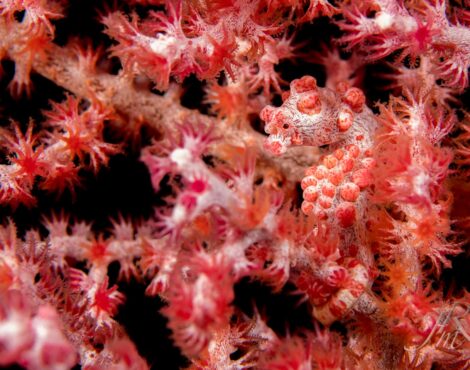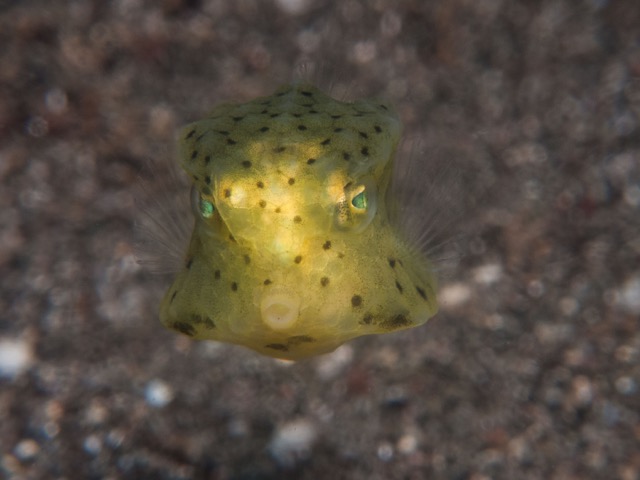
The waters surrounding Bunaken Marine Park are full of some of the strangest looking animals that you could possibly imagine. Some critters have such bizarre shapes and patterns that they might seem entirely random, but nothing in the ocean is random, and everything has evolved the way it has for a very specific reason.
Seahorses are among the slowest swimming fish on the planet, but their evolutionary design has made them almost inedible. Frogfish may just seem like a blob that can barely swim, but evolution has given it one of the fastest attacks in the animal kingdom. Most animals that are relatively poor swimmers â seahorses, frogfish and ghost pipefish – tend to be highly camouflaged, which is either used to help them catch their prey or avoid predation themselves. On the other hand, most fish are sleek and streamlined, which they use to quickly glide through the ocean to catch their prey or avoid predators.
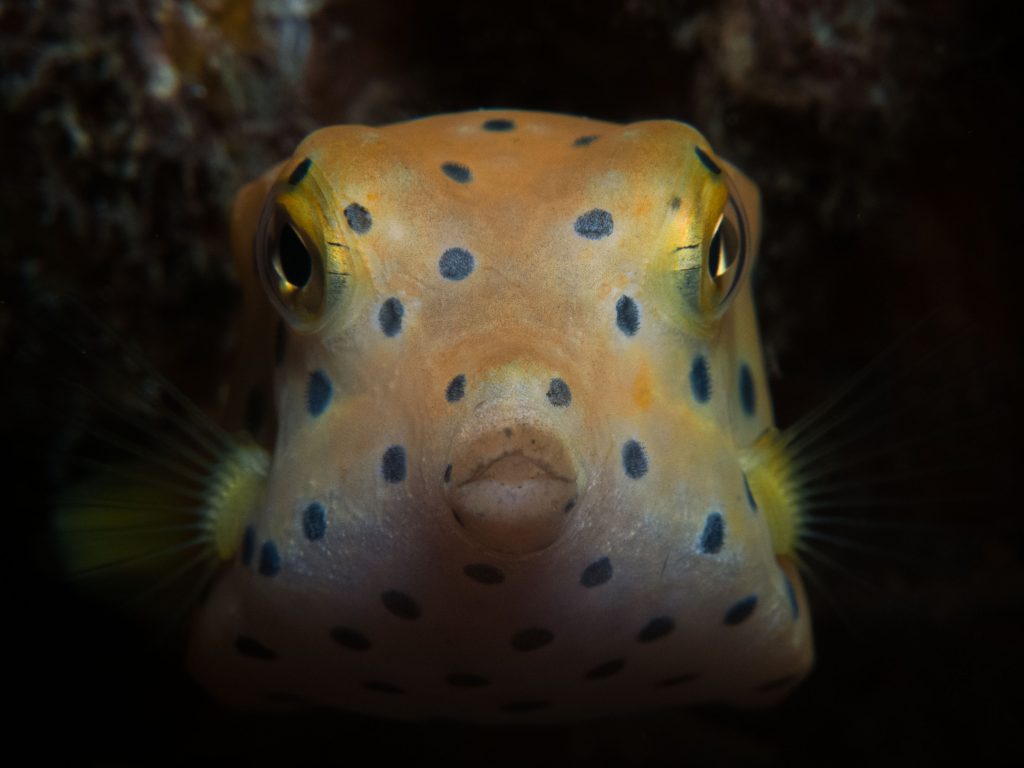
Then we have boxfish, which seem to fit into neither category. But despite their awkward appearance, box fish are extremely capable of looking after themselves due to their special evolutionary traits.
What are Boxfish?
Also known as cofferfish, cowfish and trunkfish, boxfishes are scientifically known as Ostraciidae, and are closely related to other oddly shaped fish like pufferfish and filefish.
There are 23 different species of Ostraciidae, many of which can be found around the North Sulawesi peninsula. They are either cube shaped like the name boxfish implies, or they are slightly more triangular, such as the trunkfish.
The thing that links them all together is their honeycomb like scales which are fused together to form a tough exterior. This carapace is incredibly strong, making it very difficult for any potential predators to break through. The downside of having armour plating is that the body of the boxfish is very rigid, which means all movement must come from their pectoral and tail fins.
Toxic Defences
Having an extremely tough body is not enough to guarantee safety on the reef. Any larger fish such as a barracuda or a grouper could easily chew through their tough exterior to get to the fleshy interior.
Just like their close cousins, pufferfish, boxfish are capable of producing their own toxins to deter any predators, however unlike pufferfish, boxfish do not store these toxins in their flesh, but instead they are able to secrete a toxic mucus through their skin.
When stressed, all members of the boxfish family are capable of secreting this toxic mucus, and it can be lethal to any fish nearby. The yellow boxfish has a particularly nasty toxin, which is why they are so brightly coloured. The yellow and black sports serve as a warning to any potential predators not to get too close.
This toxin is known as âostracitoxinâ and it has haemolytic effect, meaning it bursts red blood cells. It will bind to the gills of any fish nearby and slowly asphyxiates them at concentrations as small as 10 parts per million â basically the same as someone spitting in an Olympic sized swimming pool. This mucus secretion resembles certain soapy detergents and in large amounts it can be very bad for the health of the reef.
This combination of toxic mucus and their tough exterior means they have very few natural predators.
Unstably Stable
It might seem that with their tough, inflexible exterior that boxfishes are very poor swimmers, however they can actually swim up to six body lengths per second, which is faster than you might have thought, although admittedly it is nowhere near as fast as other, more streamlined fish.
Where they lack in speed, they more than make up in agility and manoeuvrability.
It was originally believed that their stability comes from their unusual shape, however recent studies suggest its shape actually destabilises it in the water. Researchers noticed that the ridges along their carapace manipulate how the water flows around their body, which in turn destabilises the fish. This may not seem like a smart evolutionary trait, however this destabilisation actually allows a wider range in movement, and by using their pectoral and tail fins in perfect synchronisation they can control this destabilisation and be extremely manoeuvrable in the water.
To put it simply, they can make much finer movements than most other fish species. They are even capable of turning 180 degrees with almost zero turn radius.
Feeding Habits
Boxfish feed on a range of benthic creatures, which include sand dwelling worms, sponges, tunicates, molluscs and other small crustaceans. They tend to be found near sandy areas because this is where they find most of their food.
Like pufferfish, they can blast a small jet of water at the substrate to disturb any sand, and then they use their pouty shaped mouths to pick through it.
Bunakenâs Boxfish
You can find different box fish species all throughout Bunaken Marine Park. The most common is the spotted boxfish, which is easy to see on almost any wall dive. Less common but found in similar environments to the spotted boxfish is the solar boxfish, which is notable for its mosaic patterns.
The yellow boxfish is probably the most famous boxfish species, and that is less commonly found on the walls, and more frequently spotted while muck diving on the North Sulawesi coastline.
Other species that are frequently found while muck diving are the thornback cowfish and the longhorn cowfish. Both are notable for their larger size â measuring up to 50cm â and a long pair of horns protruding from their carapace. Both species are frequently encountered on our muck diving day trips to Manado Bay.
While finding boxfish is not really a challenge, photographing them is far more tricky. Because of their extreme manoeuvrability in the water, they can dart from side to side and turn around in a split second. Juveniles are easier to photograph because they tend to stay put and watch you while the adults tend to swim away. Luckily for us, the juveniles are far cuter and make nicer pictures anyway!


